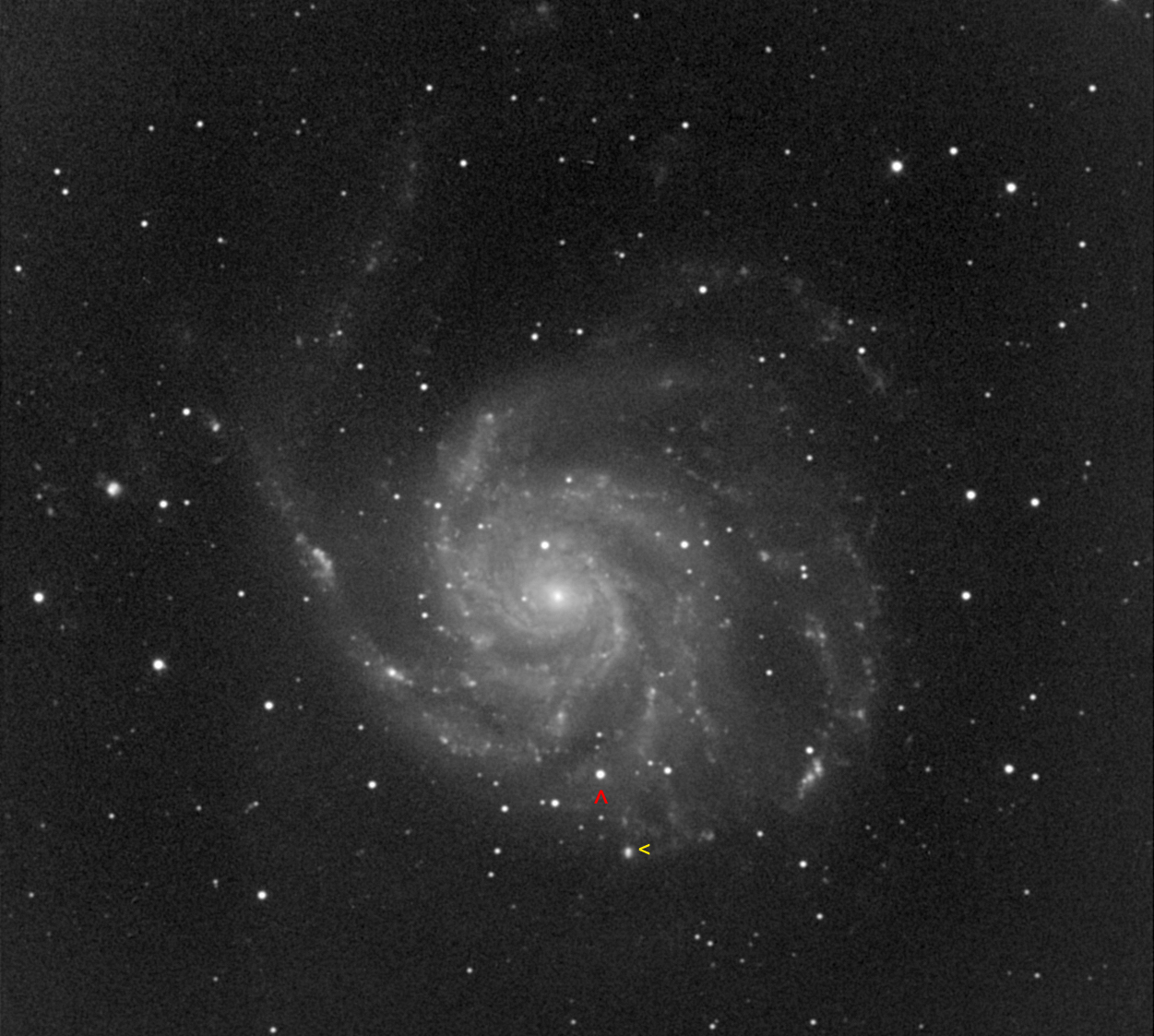Daily Image
02-09-2011The nearest Type 1a supernova in decades
| Submitter: | Albert van Duin and Ger de Bruyn |
| Description: | On August 24th, a supernova was detected in the giant spiral galaxy M101, at magnitude 17.2, by the Palomar Transient Factory (PTF). "PTF11kly" as it was originally designated, may be the nearest Type 1a supernova in decades. Type Ia supernovae have become famous when it was discovered in 1998 that the very distant type Ia SN, which are considered a 'standard candle', are fainter, and hence more distant, than expected on the basis of their absolute brightness and redshift. This has led to the notion that the Universe's expansion is accelerating which is believed to be related to a mysterious force called 'Dark Energy'. The PTF is using the venerable 1.2m Oschin Schmidt Telescope at Palomar Observatory that was used to make the Palomar Sky Surveys on glass plates. It has now been fitted wit a a 12Kx8K, 7.8 square degree CCD array (CFH12K). The supernova has rapidly brightened over the last week and got the official designation SN2011fe. The image above was made by Albert van Duin from his back garden on August 27 in Beilen with a 40cm telescope and CCD camera. Two integrations of two minutes each were made through gaps between the clouds. The supernova has a visual magnitude of about 12 in this image and is indicated by the red pointer. North is up, and East to the left, in this image. M101 has shown several other supernovae in the last century. The most recent one exploded in 1970 and was designated SN1970g. Interestingly, it was the first supernova to be detected in the radio waveband, a discovery made with the WSRT (see Allen, Goss, Ekers and de Bruyn, A&A, 48, 253, 1976). SN1970g was a type II supernova resulting from the explosion of a massive star. Indeed it was located at the periphery of a giant HII complex, NGC5455, a site of massive star formation. The location of SN1970g is indicated with the yellow marker. Type Ia supernova in external galaxies have never been detected in the radio band. 40 years after the detection of SN 1970g the WSRT is again being used by an international team of astronomers to search for radio emission from SN2011fe. |
| Copyright: | Albert van Duin |
| Tweet |  |
